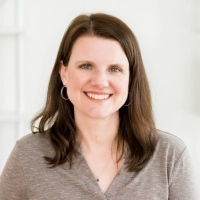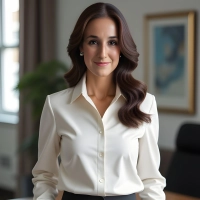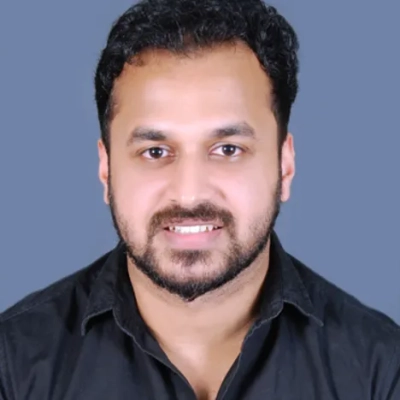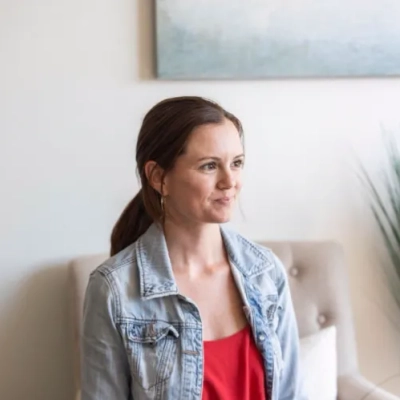We asked industry experts to describe a time when they successfully turned a weakness into a strength in their career—and the steps they took to get there. Discover their approaches for personal and professional growth, and gain valuable insights on how to leverage your unique qualities and experiences to excel in various aspects of your career.
- Transform Data Analytics into Career Asset
- Implement Focused Learning Framework
- Master Strategic ‘No’ for Intentional Growth
- Conquer Sales Fear Through Practice
- Prioritize Efficiency Over Perfectionism
- Leverage Unique Strengths in Technical Environment
- Reframe Diverse Experience as Competitive Advantage
- Develop Scalable Systems for Agency Growth
- Enhance Leadership Through Time Management Skills
- Practice Mindful Transitions to Prevent Burnout
- Leverage Risk-Averse Approach for Strategic Decisions
- Reframe Public Speaking from Performance to Knowledge-Sharing
- Use Personal Growth to Improve Feedback Delivery
- Shift from Doer to Multiplier in Leadership
- Adapt Independent Work Style for Remote Success
- Create Enjoyable Organization System to Overcome Disorganization
- Transform Networking Weakness into Business Asset
- Channel People-Pleasing Tendency into Servant Leadership
18 Ways to Turn Weaknesses into Strengths from Experts
Transform Data Analytics into Career Asset
Early in my digital marketing career, I realized one of my biggest weaknesses was data analytics. I excelled at crafting campaigns and copy, but when it came time to analyze performance or create detailed reports, I felt out of my depth.
Instead of avoiding it, I enrolled in online courses for Google Analytics and Excel, and started applying what I learned directly to my client campaigns. I also shadowed a colleague who was strong in analytics and asked for feedback on my reporting.
Within a few months, I transformed from dreading the numbers to using them to refine ad targeting, A/B test landing pages, and improve ROI. That weakness became one of my strongest assets and helped me secure a lead strategist role later on.
 Damar K
Damar K
Content Writer, Explainerd
Implement Focused Learning Framework
In the early days of my company, I realized I struggled with feeling overwhelmed by the sheer volume of new marketing trends and technologies. Instead of trying to master everything at once, I implemented a focused learning framework. I dedicated one hour each day to deep-diving into a specific topic, blocking out all other distractions during that time. This approach allowed me to gain expertise gradually, reducing stress and increasing my confidence.
Sharing this focused learning practice with my team also empowered us to collectively grow in areas where we initially felt weak, ultimately turning these into significant strengths for the company. This method helped us become specialists rather than spreading ourselves too thin across every new trend.
 Sinoun Chea
Sinoun Chea
CEO and Founder, ShiftWeb
Master Strategic ‘No’ for Intentional Growth
Early in my career, my biggest weakness was saying yes to everything. I thought overcommitting made me look driven — like the kind of person you could count on to always deliver, no matter what. But behind the scenes? It was chaos. I was constantly stretched, always reactive, and rarely delivering my best work. And the worst part? I didn’t even realize it was a problem at first. I thought burnout was just part of “the hustle.”
The turning point came when a mentor asked me a deceptively simple question: “What are you actually trying to prove?” That hit hard. I realized I wasn’t saying yes for the right reasons — I was saying yes out of fear. Fear of missing out, fear of being seen as less capable, fear of slowing down. Once I unpacked that, everything changed.
I started by rewriting my own internal definition of success. It wasn’t about being everywhere at once — it was about focus, depth, and impact. I built systems around that mindset. I implemented time-blocking like a religion, learned the power of a well-placed “no,” and started prioritizing clarity before commitment. Instead of jumping in immediately, I’d ask: What does success look like here? Is this aligned with what I’m building long-term?
Ironically, learning to say no made me more trustworthy, not less. Clients, collaborators, even my own team saw me as someone who could make clean decisions and show up fully — because I wasn’t running on fumes. Over time, that shift didn’t just make me a better leader, it made me a more strategic thinker. I was no longer reacting to everything; I was choosing where I could create the most value.
Now, that mindset is baked into how we lead projects and build culture. We believe in thoughtful growth, not frantic scaling. And that all started with turning my “yes” problem into a strength: intentionality.
For young founders reading this, my advice is this — your energy is one of your most valuable assets. Protect it like your business depends on it. Because it does.
 John Mac
John Mac
Serial Entrepreneur, UNIBATT
Conquer Sales Fear Through Practice
Early in my career, I was terrible at sales. I dreaded small talk and didn’t have the “gift of gab.” However, the truth was: I had no choice. My brother (and co-founder) was the company’s CTO, and I felt it was my duty to handle everything else. If I didn’t sell, the business wouldn’t survive.
Sales terrified me, but instead of running from it, I broke the challenge down into two simple steps:
1. I started scripting key talking points and questions, not to create verbatim reports but to build structure and confidence.
2. I recorded calls (even the cringe-worthy ones) and analyzed what went wrong: Did I ramble? Miss a key question? Lose their interest?
With enough practice and introspection, I improved. Our call-to-close rate doubled from 30% to 60%, and sales calls no longer feel like a burden. If anything, it has become one of the most valuable skills I’ve gained, all because I leaned into what I feared most.
 Stephen Greet
Stephen Greet
CEO & Co-Founder, BeamJobs
Prioritize Efficiency Over Perfectionism
Early in my career, I realized one weakness was being overly detail-focused. I’d get so caught up perfecting small aspects of a project that I risked slowing down the team.
To turn it into a strength, I built a system for prioritization: clearly defining what must be perfect versus what simply needed to meet high standards quickly. I also delegated more effectively, trusting team members with strong track records to own parts of the process.
This shift didn’t mean lowering quality; it meant improving focus and empowering the team, which ultimately boosted our efficiency and allowed us to maintain our reputation for accuracy and fast delivery. It taught me that great leadership isn’t about doing everything perfectly yourself, but creating a process and culture where the team can excel.
 Beth Worthy
Beth Worthy
Cofounder and President, GMR Transcription Services, Inc.
Leverage Unique Strengths in Technical Environment
Early in my career, I was a non-technical person on a highly technical team. I had a background in psychology and was working in a tech company alongside engineers and product experts. Most days, I felt like I didn’t belong. In meetings, I often didn’t understand the technical conversations happening around me, and I worried I would eventually be exposed as someone who wasn’t qualified to be there. I lived in a constant state of impostor syndrome and saw my lack of technical expertise as a fundamental weakness.
At one point, I seriously considered going back to school to get a master’s degree in software engineering. I thought that was the only way to keep up and be taken seriously. But before taking that leap, I reached out to our Executive Vice President of Engineering, who had gone to the same university I had. I shared that I often felt in over my head and asked if he thought an engineering degree would help me advance in the company.
His response changed everything. He said, “You don’t need an engineering degree. You’re surrounded by engineers. If you need to have a technical conversation, bring a technical person into the room. You don’t have to know everything. You just need to know who knows what you don’t and build relationships with them.”
That conversation was a turning point. It helped me see that I was being invited to those meetings because of what I uniquely brought to the discussion. I wasn’t expected to be a technical expert. I was a relationship manager, and my strength was in building connections, navigating partnerships, and offering strategic insight. I stopped trying to compete with my colleagues and started collaborating with them instead.
By shifting my mindset and focusing on my strengths, I transformed what I had once seen as a weakness into a core part of my leadership identity. Today, I share this story with my clients and audiences to help them reframe their own self-doubt and recognize the unique value they bring to the table, even when it doesn’t look like everyone else’s.
 Kim Meninger
Kim Meninger
Leadership Coach & Consultant, Kim Meninger
Reframe Diverse Experience as Competitive Advantage
When I pivoted from tourism into tech, I knew my resume would raise eyebrows. Researcher, Business Development Officer, Marketing Specialist, Employment Coach, Executive Assistant — it looked like a career path designed by someone throwing darts.
I expected the pushback: “You don’t have enough tech experience.” My background didn’t follow a neat, linear path, and on paper, it looked like a lack of focus.
I had two choices: keep explaining it away or reshape the narrative.
I chose to see my path as a strength. I asked: what do I bring that others with traditional tech experience might not? What problems can I solve that others overlook?
That question became my compass. My cross-industry experience taught me to understand people, translate between teams, and navigate shifting organizational goals, cultures, and challenges.
I reshaped how I presented myself, starting with my resume. I created a narrative that highlighted transferable skills and strategic growth.
Research became “data insights and market analysis.” Business development translated into “strategic relationship building.” Marketing skills transferred to “cross-functional communication,” while employment coaching translated into “talent development and leadership.” Even my role as an executive assistant transformed into “executive support and operational efficiency.”
Each experience showed how transferable strengths can cut across industries and deliver value in tech.
The real shift happened in interviews. When met with skepticism, I didn’t defend, I led the conversation.
I met their doubts head-on, using stories to draw clear links between my background and the value I bring.
In one interview, the hiring manager looked at my CV and said, “Your background is…interesting.” I replied, “I’m interested to understand any reservations you might have regarding my varied background.”
He admitted their product was strong technically, but user adoption was low. “Everyone here thinks like an engineer,” he said. “We need someone who thinks like a customer.”
That’s when I saw it, what looked like a gap was actually the missing piece.
Today, my eclectic background is my superpower. I bridge teams, uncover blind spots, and solve problems from angles others miss. The key wasn’t changing who I was, it was changing how I talked about it. I stopped apologizing and started owning my story. I shifted the narrative from, “I’ve done a range of jobs,” to, “I create breakthroughs where others see roadblocks.”
 Geraldine Olea
Geraldine Olea
Thought Leadership Contributor On Tech, Career Strategy & Dei | Founder & Owner, Academy Olea
Develop Scalable Systems for Agency Growth
In the early years of running my agency, I was overly focused on doing everything myself — out of both perfectionism and fear of losing control. This limited our growth and burned me out. What I once saw as “high standards” was actually a resistance to delegation. Over time, I reframed that tendency as a leadership gap, not a badge of honor. I started systematizing our work, building frameworks like PRISM Ascend™, and slowly empowering a small team to take ownership. That shift — letting go of control and focusing on scalable systems — turned my biggest limitation into our greatest strength: a streamlined, signature methodology that lets us deliver high-impact work while staying lean and focused.
 Kristin Marquet
Kristin Marquet
Founder & Creative Director, Marquet Media
Enhance Leadership Through Time Management Skills
In my early career, I struggled with time management, especially when juggling multiple projects and deadlines. I often found myself overwhelmed, which affected my efficiency and ability to deliver on time. As I moved into leadership roles, I realized that effective time management wasn’t just about organizing my day — it was critical to the success of the entire team.
To turn this weakness into a strength, I implemented a more structured approach to my work. I began using time-blocking to prioritize tasks and schedule focused work periods, allowing me to dedicate uninterrupted time to critical activities. I also learned to delegate tasks more effectively, empowering my team to take ownership of specific projects. By setting clear expectations and deadlines, I was able to streamline workflows and ensure nothing was overlooked.
Over time, these changes not only improved my personal productivity but also enhanced my ability to lead the team more effectively. Better time management became one of my strongest skills, enabling me to handle more complex projects and help others stay organized as well. This transformation not only improved my career performance but also contributed to increased team success.
 Ryan Moore
Ryan Moore
Founder & CEO, Pheasant Energy
Practice Mindful Transitions to Prevent Burnout
One weakness I’ve carried since the beginning of my career is overcommitting. I would say yes to everything: tasks outside my area of responsibility and projects I didn’t have time for, all because I saw each one as an opportunity to grow or prove I could do more.
At first, this made me incredibly versatile. I acquired new skills, wore multiple hats, and became a well-rounded individual. However, what I didn’t anticipate was the toll it would take on my mental health.
I burned out. I experienced writer’s block and found myself thinking about work even when I was off the clock. The turning point came when I realized I couldn’t continue this way. I spoke to a few peers.
One of them introduced me to the idea of compartmentalization and mindful transitions. It’s very simple: say out loud what mode you’re switching into. “I’m transitioning into work mode,” or, “I’m stepping into rest mode.” And pair it with a few deep breaths.
I’ve been practicing this for a while now, and it genuinely helps a lot. I’m more present and sleep better. I still am helpful and open to opportunities, but now I’m more intentional about how and when I do so. This shift has turned my overcommitting habit into a calibrated strength.
 Subhasri Banerjee
Subhasri Banerjee
Content Strategist, Concurate
Leverage Risk-Averse Approach for Strategic Decisions
I used to be quite risk-averse. There were certainly times earlier in my career when I didn’t take the leaps I probably should have. However, this trait has ultimately become somewhat of a strength for me. I am less risk-averse today, but that general approach to risk has helped me become a very strategic decision-maker. I’ve been faced with many significant and important decisions, and my inclination to avoid excessively large risks allows me to take the time needed to thoroughly analyze a situation and its potential outcomes.
 Seamus Nally
Seamus Nally
CEO, TurboTenant
Reframe Public Speaking from Performance to Knowledge-Sharing
Early in my career, I was terrible at public speaking — I’d literally shake during presentations and avoid client meetings. Instead of hiding from it, I decided to tackle it head-on because I realized it was limiting my growth. I started small by volunteering to present monthly team updates, then joined a local Toastmasters chapter. The breakthrough came when I shifted my mindset from “performing” to “sharing knowledge.” I began speaking at small industry meetups about topics I was genuinely passionate about. The key was gradual exposure and reframing the narrative — I wasn’t trying to be a perfect speaker, just an authentic one sharing useful insights.
 Sarath C P
Sarath C P
Digital Marketing, Eqvista
Use Personal Growth to Improve Feedback Delivery
Earlier on in my professional days, I didn’t always take criticism very well. Even when I knew it was constructive, sometimes I just took things too close to heart and allowed those criticisms to really impact the way I viewed my work and capabilities too much. I’ve definitely gotten better at being able to take criticism now and make the most out of it so that it can be a growing experience. But, I think this weakness turned into a strength by allowing me to be a lot better at giving constructive criticism to others. I am super intentional about how I word things and make the extra effort to ensure that my employees are not leaving our meetings feeling discouraged but instead feel motivated.
 Steve Schwab
Steve Schwab
CEO, Casago
Shift from Doer to Multiplier in Leadership
Earlier in my career, my biggest weakness was trying to do everything flawlessly and by myself.
As a high-performing marketer, I prided myself on being the person who could figure anything out, jump in anywhere, and carry the weight. But over time, that strength turned into a bottleneck. I was burning out, my team wasn’t developing, and strategic priorities were taking a backseat to execution.
The turning point came when I transitioned into a leadership role where the scope was simply too large to “outwork.” I was brought in to lead marketing during a period of post-acquisition change. I couldn’t scale the business — or myself — if I didn’t start delegating, trusting, and building systems.
Here’s how I turned that weakness into a strength:
1. I prioritized team development over task execution. I hired smart, specialized talent and gave them ownership instead of micromanagement. That not only expanded our capacity but also empowered people to lead.
2. I created repeatable systems. From campaign processes to KPI tracking dashboards, we reduced reliance on any one person and improved speed-to-execution.
3. I redefined success as outcomes, not effort. Instead of measuring value by how much I did, I started measuring it by how much progress we made as a team.
The result? We scaled the team 3X, delivered a 19% increase in marketing-sourced pipeline, and hit our highest growth quarters — all while building a culture of clarity, accountability, and trust.
Turning that weakness into a strength made me a better leader, a stronger strategist, and a more sustainable professional.
If you’re an entrepreneur or early-stage leader, understand that hustle is powerful, but it can only take you so far. Real growth happens when you shift from being the doer to being the multiplier. That’s where momentum lives.
 Brandy Morton
Brandy Morton
Founder & CEO, Brandy Morton Marketing Ltd. Co.
Adapt Independent Work Style for Remote Success
I used to struggle with delegation. I preferred doing things on my own because I enjoy working independently and like to have control over the projects I’m involved in. However, over time, I realized that I needed to improve my delegation skills, so I worked on developing that ability. Although I’m much better at delegating now, my independent work style proved to be a strength when it came to working remotely. I found that I could use that trait to really thrive while physically separated from the rest of my team.
 Mike Fretto
Mike Fretto
Creative Director, Neighbor
Create Enjoyable Organization System to Overcome Disorganization
Throughout my life, I have struggled with staying organized and remembering all of the tasks, meetings, deadlines, and things I need to accomplish. I noticed in high school and college that during weeks with a heavy workload, especially during finals, it was difficult to keep track of classes and homework. This realization made me aware that I needed a better system. As a solution, I turned to Google Calendar.
I began inputting all of my class times and meetings, and I color-coded everything with my favorite colors so that I liked the way the calendar looked aesthetically and enjoyed filling in every new block. Additionally, I created a document with a color-coded system listing all the work I had to complete and when it was due. I continue to use this system today, and I honestly look forward to writing down all my work and events — it’s an enjoyable process, and I know that by the end of it, I will be all set and organized for the week, which is a rewarding and secure feeling.
In this way, I took a weakness of mine and found a way to address it, while also adding an element of fun — something I knew I would enjoy — and this made the work much easier to do.
 Vivian Ellis
Vivian Ellis
Marketing Coordinator, Achievable
Transform Networking Weakness into Business Asset
My biggest weakness as a new therapist was terrible networking — I was awful at building professional relationships and felt awkward talking about my practice. I would freeze up at networking events and couldn’t even tell friends and family what I was doing without feeling like I was being salesy.
I realized this was hindering my ability to get referrals, so I completely changed my approach. Instead of trying to “pitch” my services, I started asking genuine questions about what others were working on and actually listening to their answers. When they would naturally ask about my work, I would share what I genuinely enjoyed about helping clients rather than giving some rehearsed elevator pitch.
This shift turned networking from my worst skill into my strongest business asset. The referral marketing strategies I developed from overcoming this weakness now help hundreds of therapists fill their caseloads — it became a core part of what I teach in my coaching business.
The breakthrough was realizing that authentic conversations, not perfect presentations, build the relationships that actually refer clients. My networking “weakness” forced me to find that people connect with genuine enthusiasm, not polished sales tactics.
 Danielle Swimm
Danielle Swimm
Consultant, Entrepreneurial Therapist
Channel People-Pleasing Tendency into Servant Leadership
I’m an outgoing person — and I like to be liked! Throughout the years, my desire for being liked has definitely been a weakness at times, because it has sometimes led to me stretching myself too thin or burning out in my efforts. However, I’ve also been able to turn this into a strength as a business leader. Because I want my team to like me, I go the extra mile to do right by them. I would consider myself a servant leader, and I think that’s done a lot to help create a really positive, healthy team environment.
 Jeremy Yamaguchi
Jeremy Yamaguchi
CEO, Cabana
 Damar K
Content Writer, Explainerd
Damar K
Content Writer, Explainerd
 Sinoun Chea
CEO and Founder, ShiftWeb
Sinoun Chea
CEO and Founder, ShiftWeb
 John Mac
Serial Entrepreneur, UNIBATT
John Mac
Serial Entrepreneur, UNIBATT
 Stephen Greet
CEO & Co-Founder, BeamJobs
Stephen Greet
CEO & Co-Founder, BeamJobs
 Beth Worthy
Cofounder and President, GMR Transcription Services, Inc.
Beth Worthy
Cofounder and President, GMR Transcription Services, Inc.
 Kim Meninger
Leadership Coach & Consultant, Kim Meninger
Kim Meninger
Leadership Coach & Consultant, Kim Meninger
 Geraldine Olea
Thought Leadership Contributor On Tech, Career Strategy & Dei | Founder & Owner, Academy Olea
Geraldine Olea
Thought Leadership Contributor On Tech, Career Strategy & Dei | Founder & Owner, Academy Olea
 Kristin Marquet
Founder & Creative Director, Marquet Media
Kristin Marquet
Founder & Creative Director, Marquet Media
 Ryan Moore
Founder & CEO, Pheasant Energy
Ryan Moore
Founder & CEO, Pheasant Energy
 Subhasri Banerjee
Content Strategist, Concurate
Subhasri Banerjee
Content Strategist, Concurate
 Seamus Nally
CEO, TurboTenant
Seamus Nally
CEO, TurboTenant
 Sarath C P
Digital Marketing, Eqvista
Sarath C P
Digital Marketing, Eqvista
 Steve Schwab
CEO, Casago
Steve Schwab
CEO, Casago
 Brandy Morton
Founder & CEO, Brandy Morton Marketing Ltd. Co.
Brandy Morton
Founder & CEO, Brandy Morton Marketing Ltd. Co.
 Mike Fretto
Creative Director, Neighbor
Mike Fretto
Creative Director, Neighbor
 Vivian Ellis
Marketing Coordinator, Achievable
Vivian Ellis
Marketing Coordinator, Achievable
 Danielle Swimm
Consultant, Entrepreneurial Therapist
Danielle Swimm
Consultant, Entrepreneurial Therapist
 Jeremy Yamaguchi
CEO, Cabana
Jeremy Yamaguchi
CEO, Cabana







